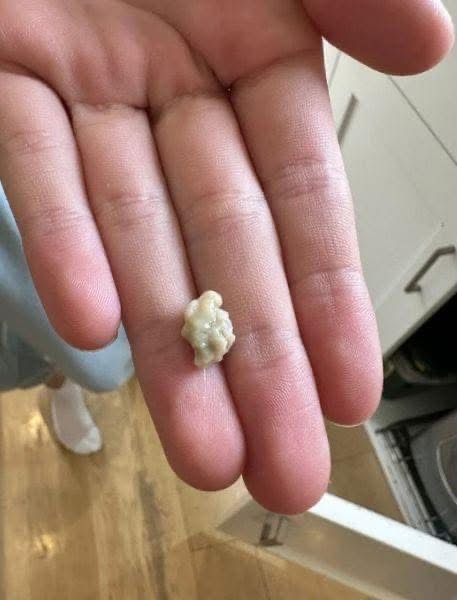Tonsil stones, also called tonsilliths, are small clumps of whitish, odorous collections of bacteria or debris on or in the tonsils’ surface crevices (crypts). Even though tonsil stones may cause some discomfort, they are not dangerous and are usually easy to treat.
Tonsil stones are often mistaken for food particles but are mostly made up of shredded epithelium. The epithelium or surface lining of the tonsils will be shed and collected in the crypts of the tonsils. This debris mixes with bacteria, resulting in a low-grade sore throat and/or chronic bad breath.
When the tonsilliths fill the crypts, they can be coughed out or removed with pressure from a Q-tip or finger. Unfortunately, after removal, they will generally recollect within weeks to months. They can be annoying, but if they occur infrequently and are only mildly symptomatic, treatment isn’t needed. However, tonsilliths can be a weekly or even daily annoyance for some people, and these patients often seek help.
Possible Causes of Tonsil Stones
- Poor Dental Hygiene
- Large Tonsils
- Chronic Sinus Issues
- Chronic Tonsillitis
- Symptoms of Tonsil Stones
Some people have no symptoms when experiencing tonsil stones. Others experience redness or irritation of the tonsils, bad breath, feeling as if something is stuck in the throat. Other symptoms may include ear pain, ongoing cough, and swollen tonsils. Some tonsil stones are white, yellow, or grey nodules. Others may not be visible because they are buried in the tonsil crypts.
Treatment for Tonsil Stones
One of the most common treatments is simply scraping them with a toothbrush.
Gargling with salt water can help dislodge them as well.
Using a cotton swab to express them is another option.
But sometimes, the tonsil stones are so deeply embedded that they need professional help.
The permanent solution for tonsilliths is the removal of the tonsils or a tonsillectomy. Tonsillectomy is generally performed as an outpatient procedure under general anesthesia. Recovery from Tonsil Surgery is often quite painful. Usually, the patient requires a week out of work or school. Other professional procedures include Laser tonsil cryptolysis and coblation cryptolysis.
Prevention
According to the Mayo Clinic, preventing the formation of tonsil stones requires good hygiene.
Brushing teeth and tongue in the morning, after meals, and at bedtime.
Flossing teeth daily can help remove bacteria in the mouth.
Gargling daily with commercial gargles or a mix of hydrogen peroxide and water. Avoid mouthwash that contains alcohol.





